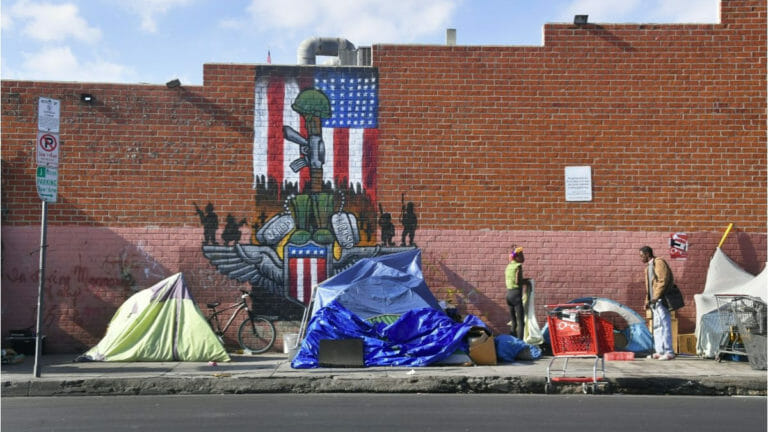Welfare is a dirty word in America. Corporate welfare is the real dirty word, though, X rated in fact. See just who gets the real welfare in America.
There is much nasty rhetoric and foaming at the mouth over welfare. The very word conjures up a particular image in the minds of some people. Lazy single mothers with a parcel of kids from different fathers pulling up to the supermarket in a Cadillac and paying for steak and lobster with food stamps.
I go to work every day, and I don’t live that well. Why should they?
The image even had it’s own meme if there can be such a thing in the pre-internet days – The Welfare Queen. The term took hold during Ronald Reagan’s 1976 presidential campaign when he referred to a South Side Chicago woman who had committed welfare fraud along with a litany of other crimes.
I get it. I go to work every day, and I don’t eat steak and lobster at every meal. But is it an accurate portrayal? And should social welfare be the focus of so much ire, or is there a more significant source of welfare that seems to get a pass in this country?
Social Welfare
Social welfare includes things like Medicaid, SNAP (what used to be called food stamps), housing assistance, and home energy assistance. But it also includes things like unemployment and veteran’s benefits.
It’s challenging to get a hard number on what the US spends on social welfare programs because different reports include and exclude various programs.
Back in 2011, Senator Jeff Sessions of Alabama released a report that included 83 different programs and clocked in the spending at $1.03 trillion. The CATO Institute published similar numbers the following year.
But both of those numbers include things like The Earned Income Tax Credit, which you have to work to earn. The clue is in the name for cripes sake, earned.
They also include funding for Head Start programs. I know some programs can be abused, but I’m pretty sure Head Start is something we can all agree is a good thing. Education for little kids from low-income families is pretty hard to demonize.
If we separate those kinds of programs from things like SNAP and housing vouchers, the kind that some people seem to resent, the spending comes in at about $212 billion per year. That’s a lot, but it’s a lot less than $1 trillion.
Corporate Welfare
The dictionary definition of corporate welfare is “government support or subsidy of private business, such as by tax incentives.” Seems pretty innocuous until you start poking around a bit.
A report from the General Accounting Office found that in 2011 the US spent a nearly identical amount on corporate tax expenditures as it collected in corporate taxes, $181 billion. Again, it’s hard to get the numbers to add up. Each report seems to categorize subsidies, tax credits, tax incentives differently.
Some separate federal from state and state from local but whatever metric you use, it is billions of dollars, maybe hundreds of billions that profitable corporations are siphoning out of your pocket. Siphoning isn’t even the right term. It’s more like they are reaching right into your wallet and daring you to do something about it.
This is our guide to budgeting simply and effectively. We walk you through exactly how to use Mint, what your budget should be, and how to monitor your spending automatically.
The Real Welfare Queens
So, where are those billions going? Let’s look at some of the biggest and most grotesque beneficiaries.
-State and local subsidies account for about $80 billion. GM was gifted $1.7 billion in grants. Amazon, Boeing, and Microsoft each got over $200 million.
-Hedge fund managers receive a special tax break that allows them to pay a 20% rate, the people they make money for pay 35%. That has been estimated to cost $6 billion.
-Wal-Mart. The Walton family could have a whole list devoted to how much welfare they suck up, and the list would run several chapters. Here are a few highlights.
The Waltons, America's biggest dole dossers.
Tweet This-Wal-Mart gets $7.8 billion a year in corporate welfare. $6.2 billion of that are in the form of social welfare their employees get via things like Section 8, SNAP, and Medicaid because Wal-Mart doesn’t offer a living wage for most employees. They are America’s biggest private employer.
-But don’t think Wal-Mart is completely heartless! In 2013, a store in Canton, Ohio held a food drive for employees who would otherwise have not had anything to eat for Thanksgiving. Those Waltons, is there no beginning to their generosity?
-Another $1 billion is saved using tax breaks and loopholes to write off capital investment costs.
-$607 million in federal taxes are avoided through lowered tax rates on capital gains.
-Double-dipping! Not only does Wal-Mart pay their low wage employees so little that they require SNAP benefits, but Wal-Mart captured 18% of the SNAP market in 2013. Henry Ford paid his workers well enough so they could afford to buy his cars. The Waltons pay so little that their employees can only afford to shop at Wal-Mart.
-Remember this article about getting money out of politics and how lobbyists spend big money buying Congress? Wal-Mart spends $6-8 million a year lobbying. And it’s working if the numbers above are what we judge by. A better return on investment than the measly 7% us plebs are getting in the stock market.
-In 2013 the state of Washington gave an extension on tax breaks to Boeing that will total $8.7 billion. That is the single biggest state tax subsidy ever granted to an American company. That little deal, along with “worker concessions” that will move them away from pension plans, secured production of the 777X aircraft will remain in Washington.
Boeing lobbyists were understandably delighted with this outcome. Such was their gratitude, they threw a party for Washington state lawmakers. I wonder if the goody bags were big suitcases full of unmarked bills.
All things considered, Boeing is not the worst company to subsidize. They pay their workers pretty well so they aren’t on the breadline like Wal-Mart’s employees. But it continues the dangerous precedent of big companies blackmailing state and local government with the threat of job losses to wring ever-bigger subsidies out of the treasury. Which we all pay for, whether you work for Boeing or not.
The Bottom Line
So, what is all this corporate welfare costing you? About $6,000 a year for each American family. Would some of us just blow that money on dining out and updated tech gadgets?
Yes, of course.
But some of us would put that money into a retirement account, save it for a child’s college fund, or pay down our college loans.
I can tell you what none of us would do, hand it over to any member of the Walton family.



